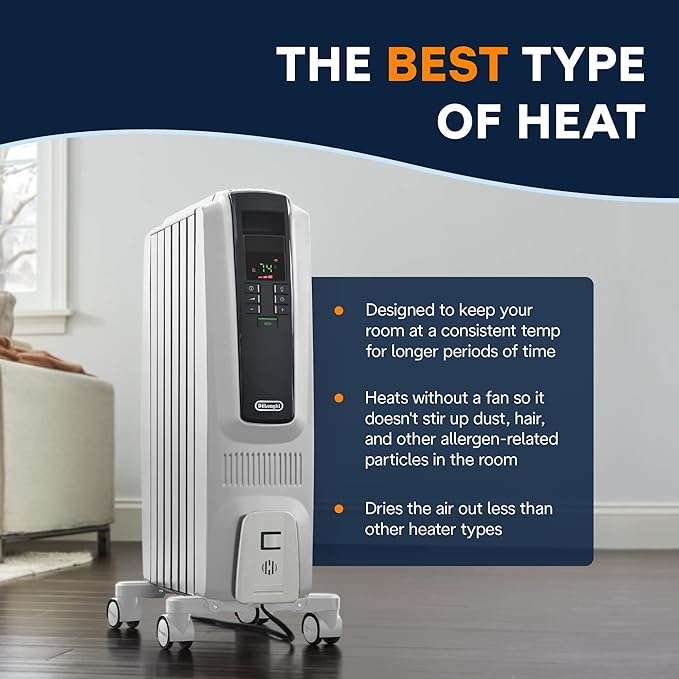Are Electric Oil Heaters Worth It?
During the cold winter months, many people rely on electric oil heaters for warmth. These heaters have gained popularity due to their safety, reliability, and effective heat output. But are electric oil heaters really a good choice, and how much electricity do they consume? Below, we’ll explore the pros and cons of electric oil heaters and their power usage.
Advantages of Electric Oil Heaters
- Effective Heat Retention: Electric oil heaters emit a substantial amount of heat and can maintain warmth for a long period, even in the event of a power outage.
- Safe and Clean: They do not produce harmful gases or electrical noise, and they operate safely without dust or odors, making them hygienic and safe for indoor use.
- Low Surface Temperature: The surface temperature of an electric oil heater is generally below 85°C, reducing the risk of burns if touched.
- Versatile Usage: Ideal for areas where people may come into direct contact, such as bedrooms, living rooms, and offices.
- Long-Lasting Heating Oil: The oil inside the heater does not need replacement, offering a long service life with silent, light-free operation.
- Convenient for Drying Clothes: Many models come with built-in racks for drying clothes, allowing users to warm their garments while heating the room.
- Affordable: Typically, the price range for electric oil heaters is between $400–$500, making them a moderately priced heating option.
Disadvantages of Electric Oil Heaters
- Slow Heat Dissipation: Compared to other heaters, oil heaters release heat at a slower rate.
- High Power Consumption: These heaters take longer to preheat and have a slower heating rate, leading to higher energy use.
- Limited Compatibility: Homes with small-capacity electrical setups or low voltage may struggle to support these high-power devices.
- Causes Dryness: While oil heaters can make rooms very dry with prolonged use, newer models often include a humidifying function to counter this effect.
- Space Requirements: Oil heaters are relatively heavy and may occupy considerable space within a room.
Power Consumption of Electric Oil Heaters
Electric oil heaters use heating tubes to warm the oil inside, which then radiates heat through convection. With power ratings typically between 1,000–3,000 watts, they are available in low, medium, and high settings (up to 2,000 watts), consuming about 2 kWh per hour.
All electric heaters operate with nearly 100% efficiency, meaning they convert all input electricity into heat. Thus, energy consumption remains consistent across different heater types.
Electric Oil Heaters vs. Air Conditioners
- Power Consumption: Electric oil heaters use more power to produce the same heat output as an air conditioner. For instance, a 2,000-watt oil heater consumes about 2 kWh per hour, while air conditioners, due to their high heating efficiency, can produce substantial warmth with less power.
- Temperature Sensitivity: Air conditioners’ heating efficiency drops as outdoor temperatures fall below 0°C, making oil heaters more efficient in extremely cold conditions.
- Heating Method: While air conditioners heat a room quickly through hot air convection, oil heaters rely on radiant heat, which takes longer to fill a space but offers even, long-lasting warmth. For larger rooms, air conditioning may provide faster heating.
Electric Oil Heaters vs. Traditional Heaters
- Comfort: Electric oil heaters provide uniform heat without affecting room humidity, creating a comfortable environment. Traditional heaters, however, can quickly dry out the air, leading to dryness.
- Power Demand: Electric oil heaters require substantial power, which may not be compatible with low-capacity households. Traditional heaters typically use less power but can be noisier.
- Placement: Oil heaters emit substantial radiant heat and can maintain warmth even after being turned off, making them suitable for bedrooms, living rooms, and offices. Many models also include drying racks for clothes. Traditional heaters, however, heat small spaces quickly and are often waterproof, making them ideal for bathroom use.

